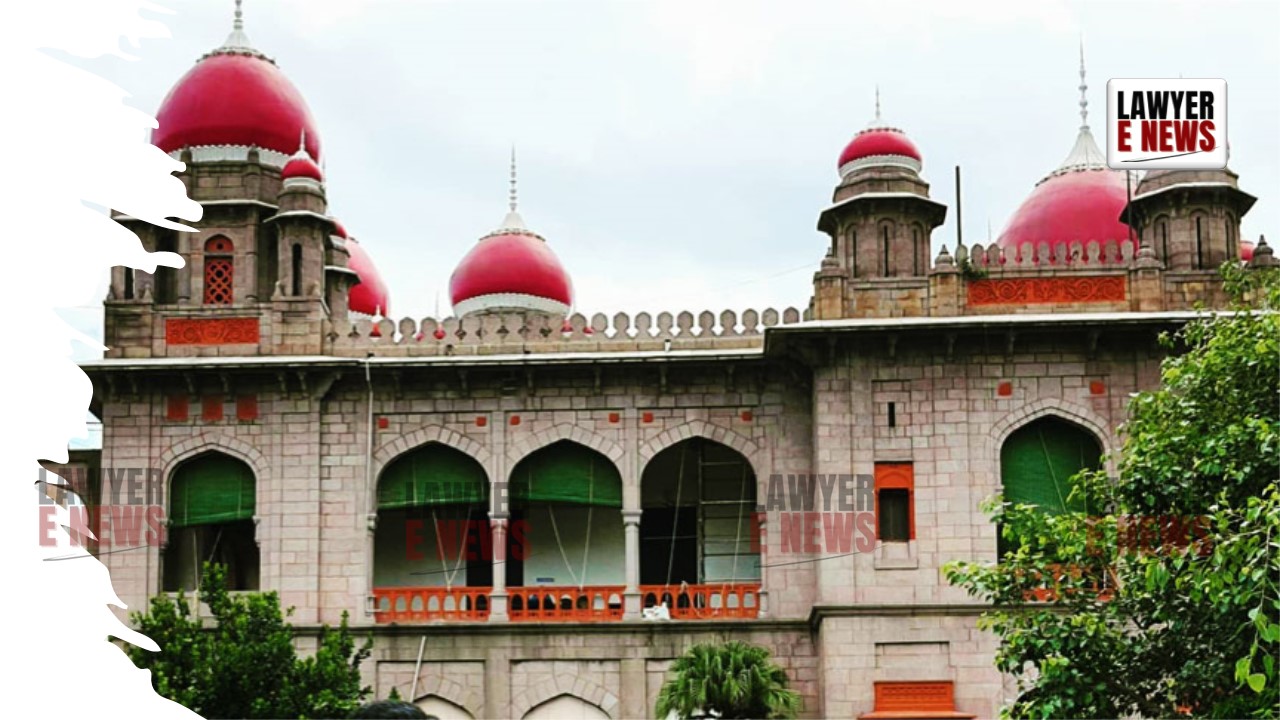-
by Admin
18 December 2025 4:03 PM



Telangana High Court delivered its judgment in a sensational murder case, acquitting three accused (A5, A6, and A7) while affirming the conviction of two others (A2 and A3). The case revolved around the murder of Sathish in 2010, allegedly motivated by prior altercations stemming from accusations of indecent behavior. The Court cited discrepancies in eyewitness testimonies and insufficient evidence to establish a shared intent among the accused to commit the murder, resulting in the acquittal of those accused of participating under the doctrine of common object.
The murder occurred on November 6, 2010, following a chain of events sparked by an alleged instance of indecent behavior by one of the accused (A1) towards the sister of an eyewitness (PW5). On being confronted and reprimanded by the victim and his friends, A1, feeling humiliated, allegedly conspired with other accused persons to eliminate the victim. The prosecution claimed that A2 and A3, armed with a knife and an iron rod, inflicted fatal injuries on Sathish at a graveyard, while A5 to A7 acted in concert by threatening witnesses and concealing weapons.
The prosecution invoked Section 148 IPC, arguing that the accused formed an unlawful assembly with a shared intent to commit murder. However, Justice K. Surender emphasized:
“To convict an accused with the aid of Section 148 IPC, the prosecution must prove not only the existence of an unlawful assembly but also the specific and unlawful common object binding the assembly. A clear finding regarding this object is indispensable.”
Citing Kuldip Yadav v. State of Bihar (2011) and Raju v. State of Rajasthan (2013), the Court reiterated:
“Mere presence at the scene or possession of weapons is insufficient to establish a common object unless overt acts or explicit evidence demonstrate collective intent.”
Discrepancies in the testimonies of PWs 1 to 4 regarding the presence and role of A5 to A7 at the crime scene raised doubts about their involvement.
The Court scrutinized the accounts of PWs 1 to 4, noting contradictions regarding the timing and manner of the accused's actions. Justice Surender remarked:
“While PW1 stated that A4 to A7 appeared after the attack, PW2 claimed they were present beforehand, while PW3’s account conflicted with both. Such inconsistencies weaken the prosecution’s narrative and cannot conclusively prove the role of these accused.”
The Court upheld the conviction of A2 and A3, who directly inflicted fatal injuries on the victim. The consistent accounts of eyewitnesses regarding their actions and forensic evidence corroborated their culpability.
However, in a significant development, A3 was found to be a juvenile at the time of the offense, aged 15 years and 8 months. Applying the Juvenile Justice (Care and Protection of Children) Act, 2000, the Court observed:
“Regardless of the nature of the crime, the maximum punishment for a juvenile cannot exceed three years. Considering the appellant’s age at present, no further detention is warranted.”
The Court also highlighted a three-hour delay in filing the complaint and the lack of corroboration regarding the recovery of weapons. Justice Surender noted:
“The unexplained delay and inconsistencies raise the possibility of false implication, especially for A5, A6, and A7, who were acquitted for lack of conclusive evidence.”
The Court acquitted A5, A6, and A7 of all charges, directing their immediate release. The convictions of A2 and A3 were confirmed, with A3’s sentence modified in accordance with juvenile justice laws.
This judgment underscores the judiciary’s commitment to upholding procedural fairness and ensuring convictions are based on unequivocal evidence. By acquitting three accused and reaffirming the principle of "common object," the Telangana High Court has highlighted the rigorous evidentiary standards required in criminal cases involving multiple defendants.
Date of Decision: November 21, 2024
